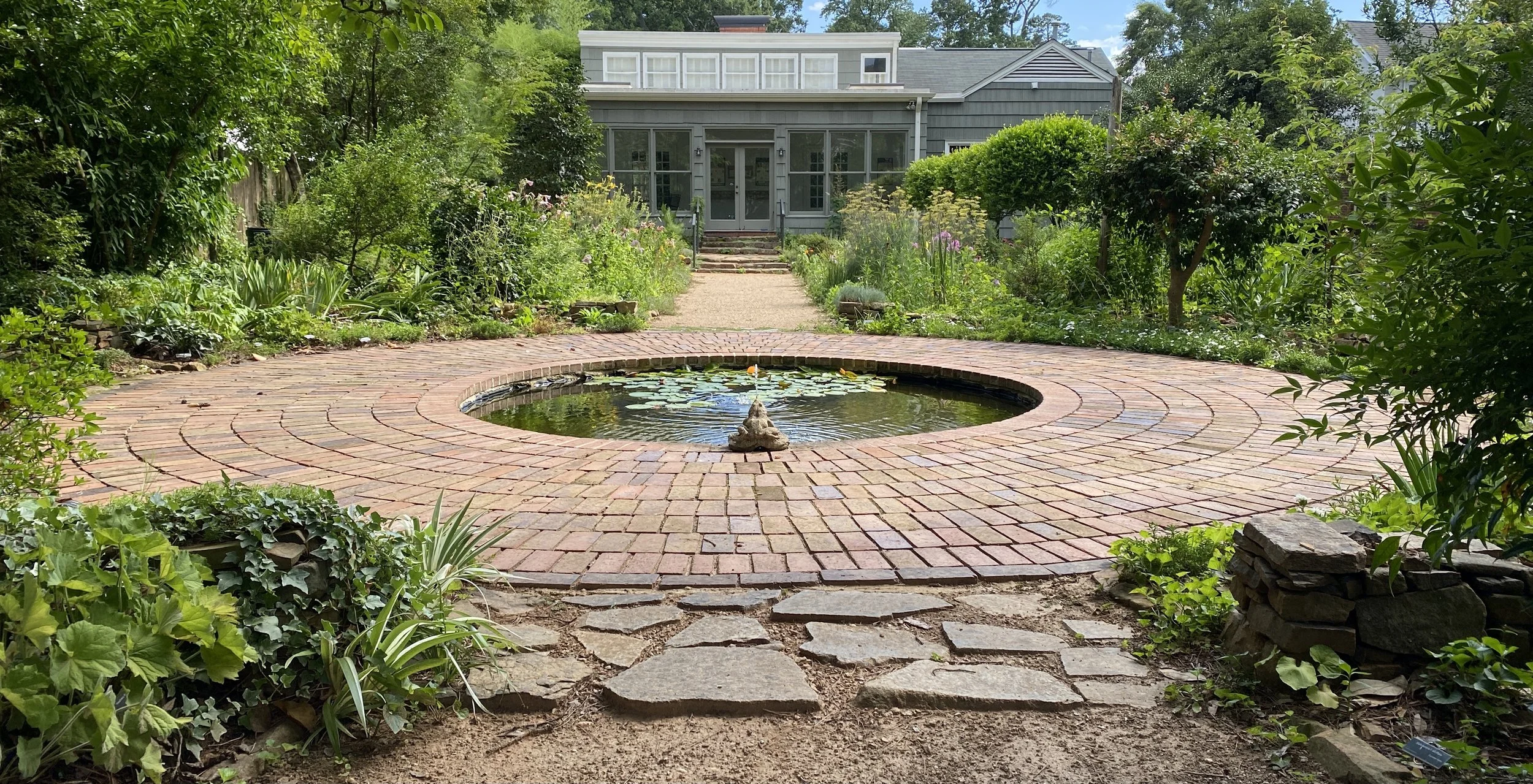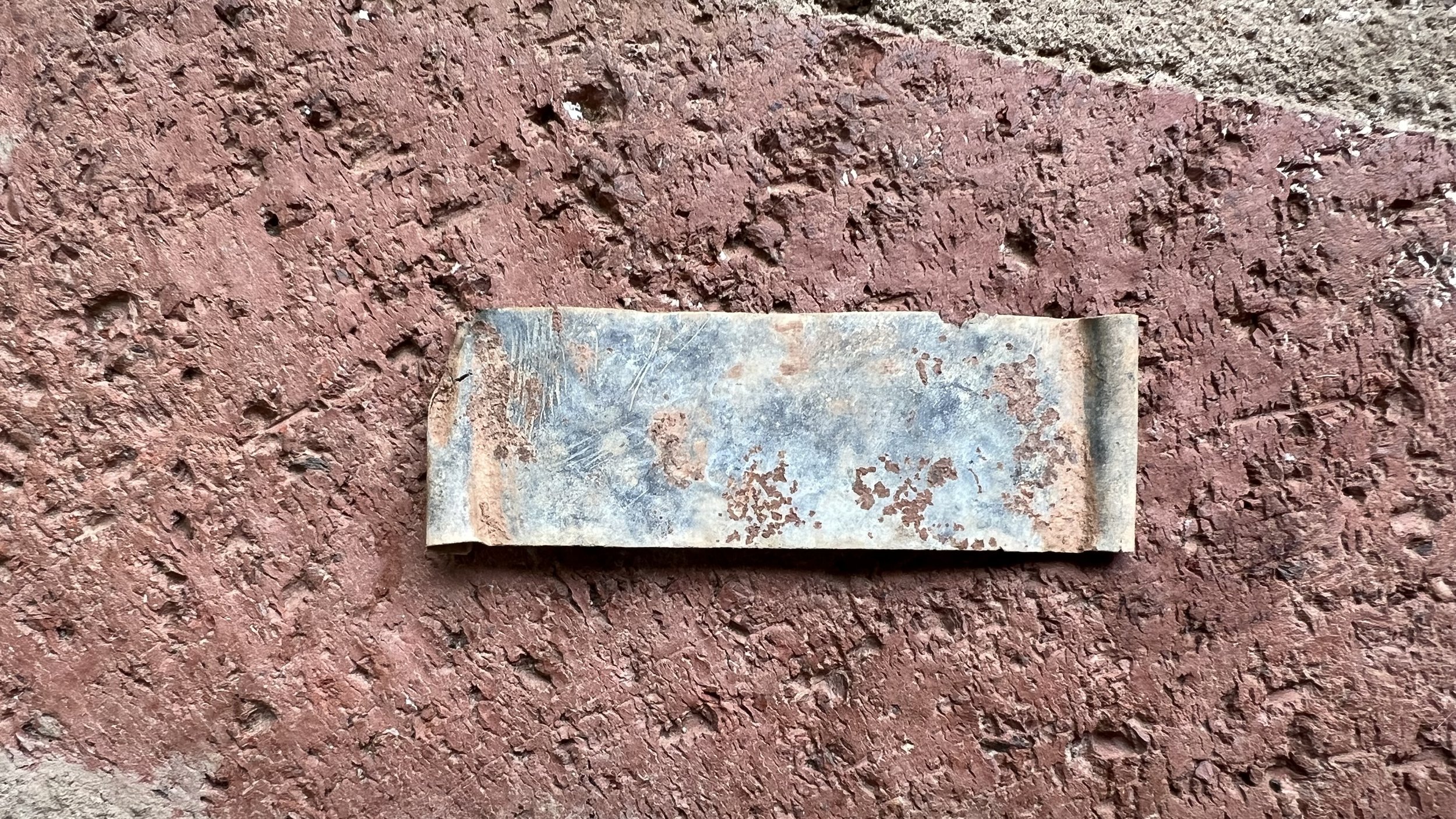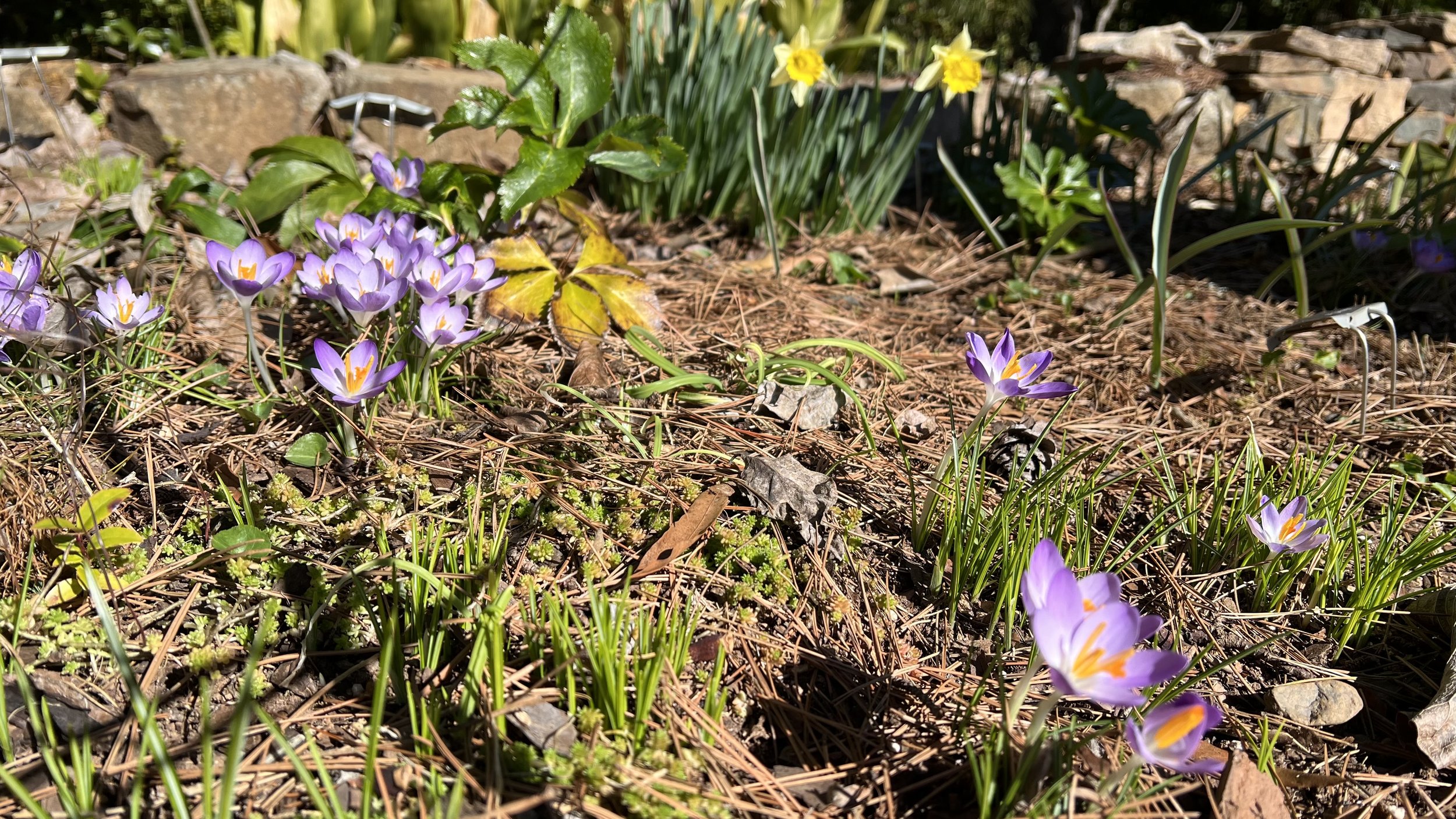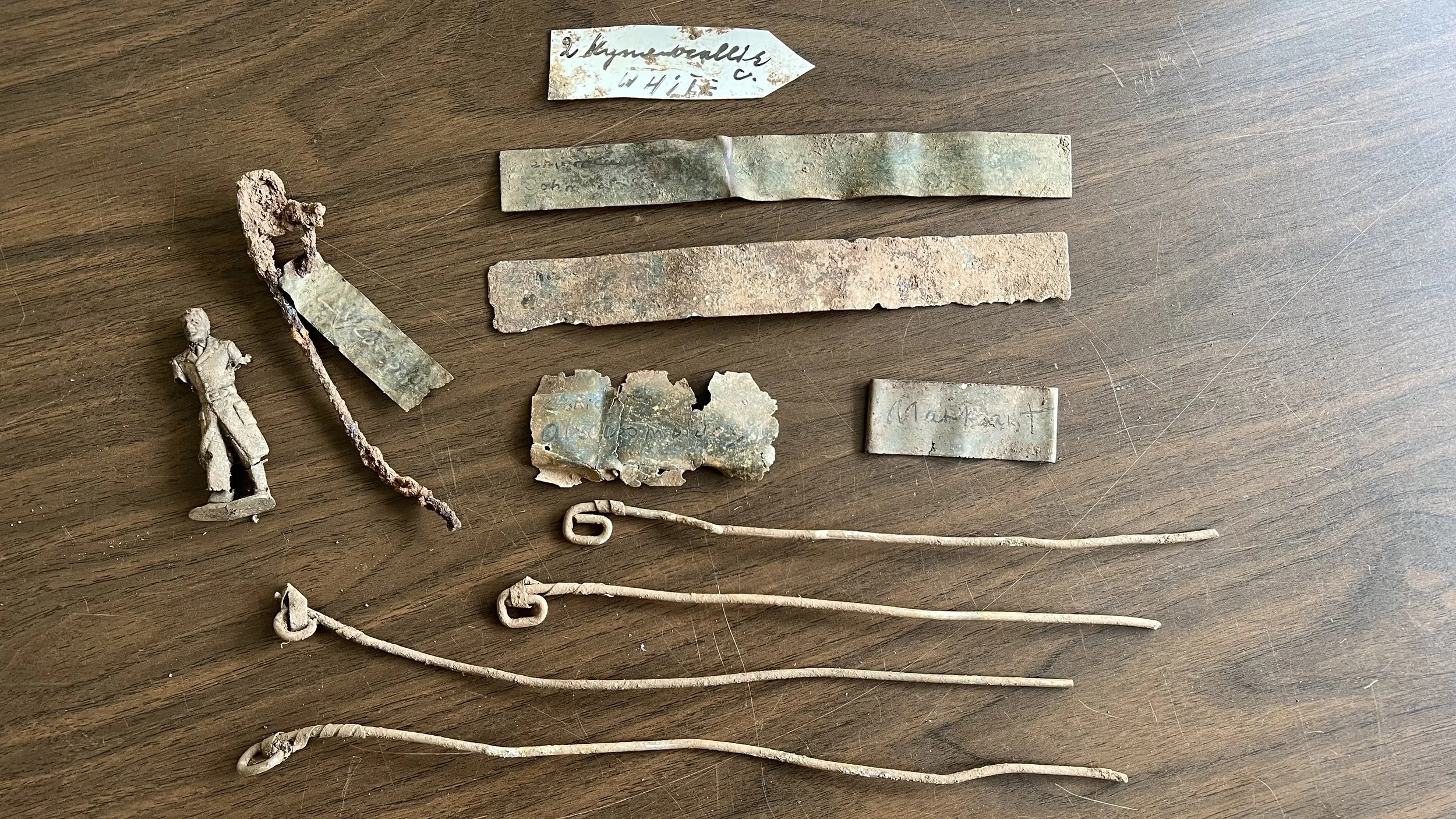The “dig of the day’ for February 29, 2024
It isn’t often that digging in Elizabeth Lawrence’s garden yields the discovery of an original plant tag, but when it does, it’s like a lightning strike… only in the very best way. Maybe that isn’t the best analogy, but I think you know what I mean. With every unearthed (and legible) original plant tag comes the potential of another piece of the most intricate, complex and dynamic puzzle you can imagine. Yesterday yielded one such puzzle piece that I’m still somewhat figuring out.
“Labels… must be permanent, easily read, and inconspicuous. The best… I have tried are strips of zinc or copper. (I got a sheet metal dealer to cut his scraps into strips about an inch wide and eight inches long.) I print the name with acid and a gold pen.”
-Elizabeth Lawrence
A Rock Garden in the South
Elizabeth did not always stick to the method described above. The bulk of tags I have found have been a mix of metal strips, tie-on lead strips, and standard metal nameplates slid on a two-prong stake. Sometimes I find tags completely or mostly intact. Sometimes only metal fragments remain, casualties of decades of intense cultivation and being buried in slightly acidic soil for who knows how long.
Site of discovery
If I’m really lucky, some portion of handwriting is still visible after decades of dirt is very carefully cleaned off. Yesterday’s find is a completely intact nameplate. The legibility of the handwriting is partially decent. When I tilt the cleaned nameplate just the right way in the light, I can make out “Rosa”. Excellent! Now I know there was a rose planted in or very near the spot of the discovery. My research starts in Elizabeth’s card index—several metal drawers and small boxes of three-by-five index cards on which she recorded an immense amount of information about every plant she grew, read about in books, and learned about from other gardeners. It is a mind-boggling handwritten database consisting of (by my best guesstimate) somewhere between 15,000-20,000 cards. Thankfully, they have been digitized, which makes it much easier to access their information, but then there is the issue of Elizabeth’s penmanship.
While I only have a portion of viable information from yesterday’s “dig of the day,” I am one tiny puzzle piece closer to the overall picture of seeing this garden space through its creator’s eyes.







